Taking Trees Observations - GLOBE Observer
Taking Trees Observations
The app tutorial provides the information you need to make a Trees observation. Once you complete the tutorial, the app will walk you through the data collection steps. Additional resources to learn more about trees and how to take observations can be found below.
Jump to: Tips and Tricks -- FAQs -- Tutorials
How to observe:
- Locate a tree and use the app to measure the angle between the bottom and the top of the tree (required)
- Photograph the tree (optional)
- Count the number of steps to walk to the tree (to estimate the distance), and make a measurement of the location at the tree’s base (required)
- Measure the circumference of the tree trunk (requires a tape measure or other means of measurement, optional)
- Report on surface conditions - snow/ice, standing water, leaves on trees, etc. (required)
The app will use the angle measured and an estimate of the distance to the tree to estimate the tree’s height.
Tips for Accuracy:
- The app uses your height to estimate your step length, which it then uses to estimate the distance to the tree, but you can also measure your pace directly, which will make your tree height measurements more accurate.
- Keep your device at eye level and just tilt between the base and the top of the tree to get the most accurate angle measurement. Avoid moving the phone up or down while measure these angles.
- If you need to walk uphill or downhill to the base of the tree, your pacing will be different than on level ground. Use a tape measure to measure the exact distance from your observation location to the base of the tree.
- If multiple people are taking measurements using the same device, make sure you change the height setting in the app in between users (tap on the “?” in the lower right corner while in the Trees tool, then select "change current user height settings").
Where to Observe:
- Make sure you have permission to take observations in any location you choose to collect data, follow all local laws and guidelines, and maintain proper safety while observing.
- Trees measured should be isolated trees or the tallest trees in a large grouping of trees, and at least 5 meters (16 feet) tall. Stand 7 to 25 meters (25 to 75 feet) away and ensure you have a clear view of the top and the bottom of the tree.
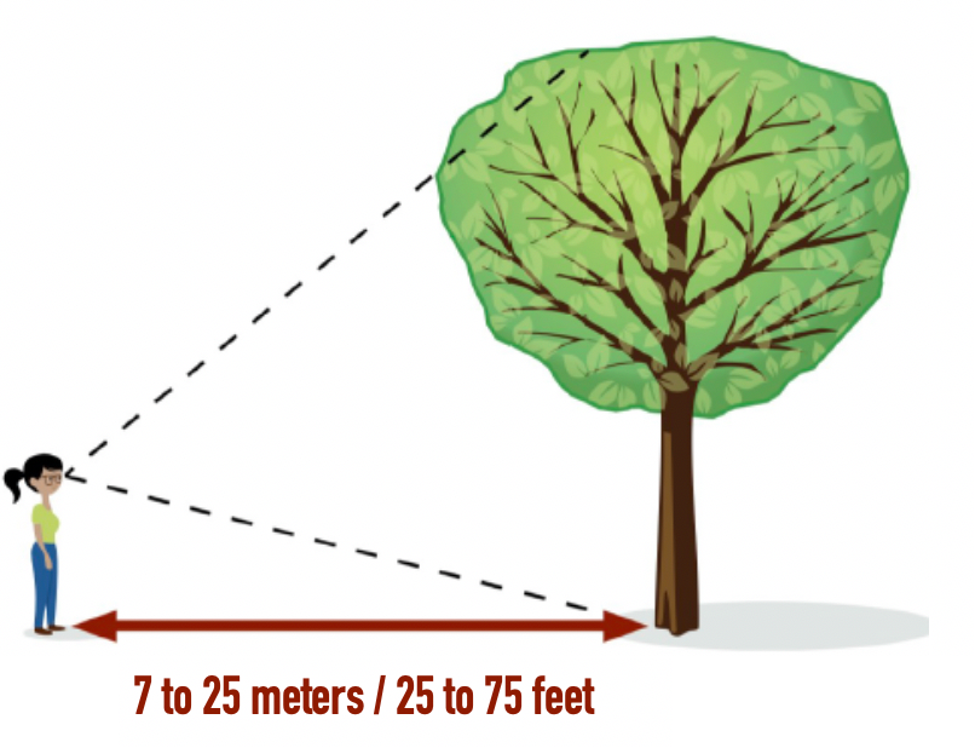
- Trees on level ground and with a clear approach to the base will be the easiest to measure. Be aware of any exposed roots or other tripping hazards between you and the tree, and look for any dangerous plants, like poison ivy.
- On a steep slope, you may need to measure the exact distance to the tree, rather than relying on pacing, as your normal pace may change when walking up or down a steep incline.
When to Observe:
- Trees can be measured at any time.
- You may find it interesting to monitor a tree’s growth over time, doing a repeat measurement of the same tree every few months.
An analysis of GLOBE Observer tree height data in a paper published in Environmental Research Letters on 21 June 2022 discussed four things you can do to make sure your observations are most likely to be able to be compared to satellite data. You can read a summary of the article from our News section, "Comparing GLOBE Trees to ICESat-2: A New Scientific Publication," or the full paper titled, “The potential of citizen science data to complement satellite and airborne lidar tree height measurements: lessons from The GLOBE Program.”
Earn Trees Awards:
- As you collect data, you can earn milestone badges for every 1-5-10-25-50-75-100-150-200-250-300-400+ observations you submit under each protocol. You will receive an email with each milestone badge, unless you choose to opt-out under your account settings.
- You can also start a streak by collecting data for more than two days in a row. Missing Saturday and Sunday will not disrupt your streak. Track your badges and streaks under My Achievements on the GLOBE Observer app home screen.
- Learn more.
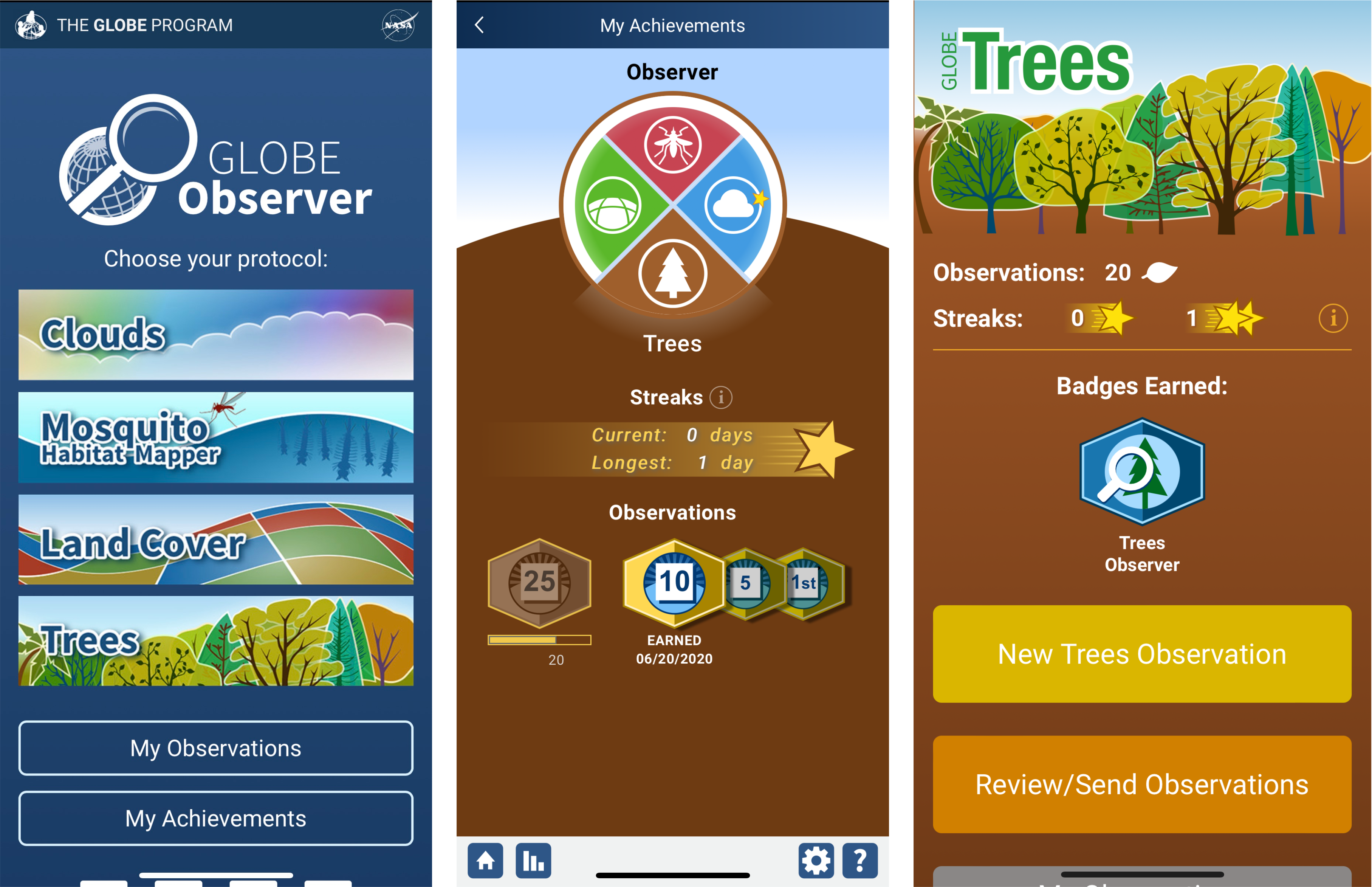
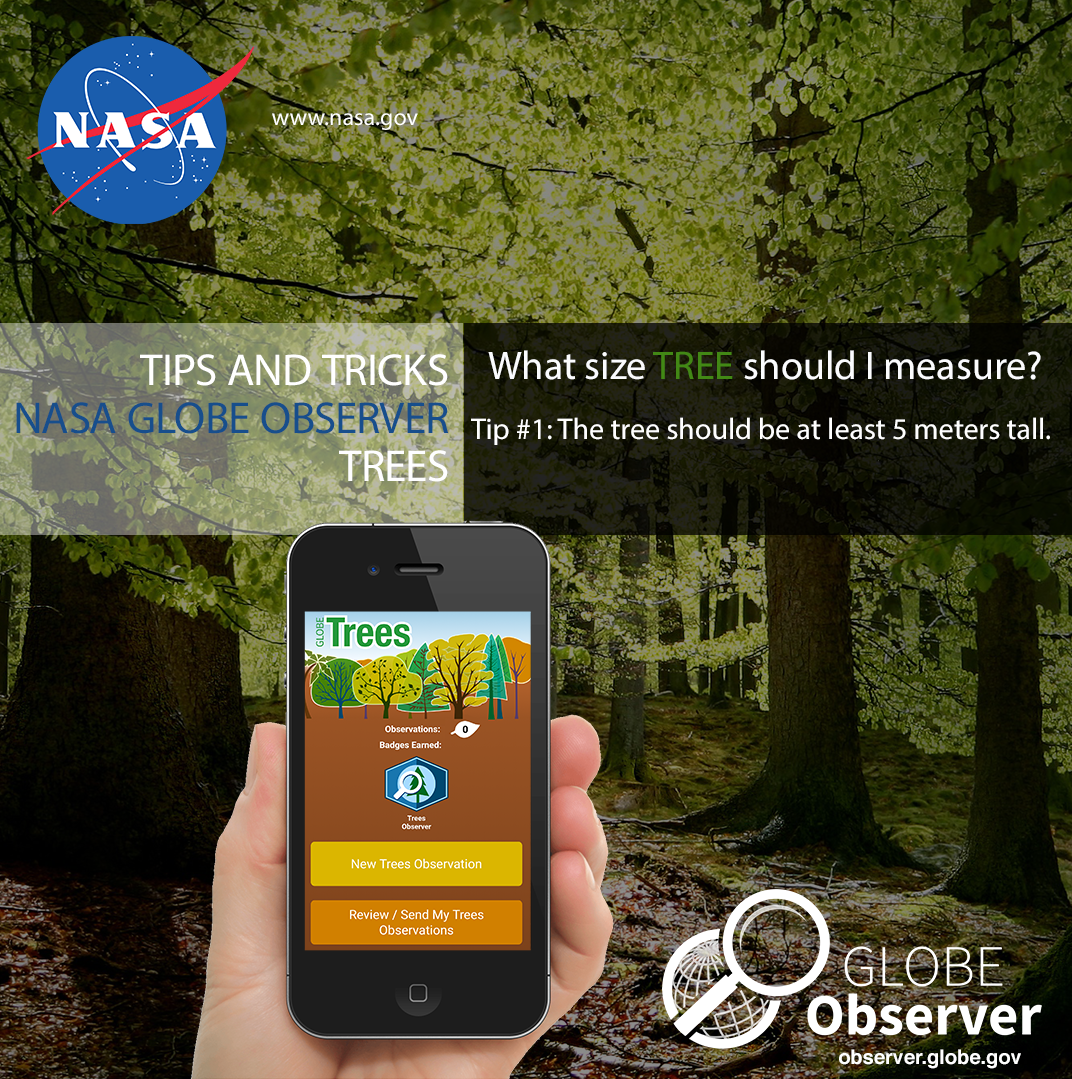
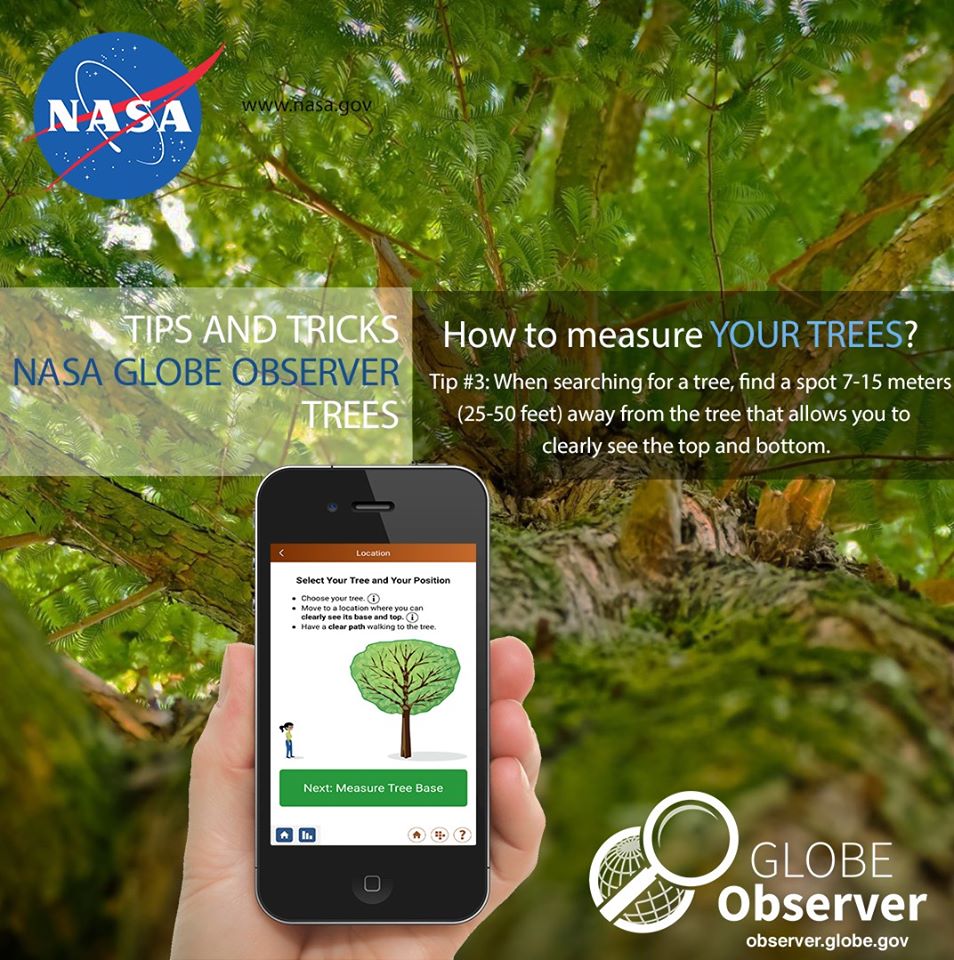
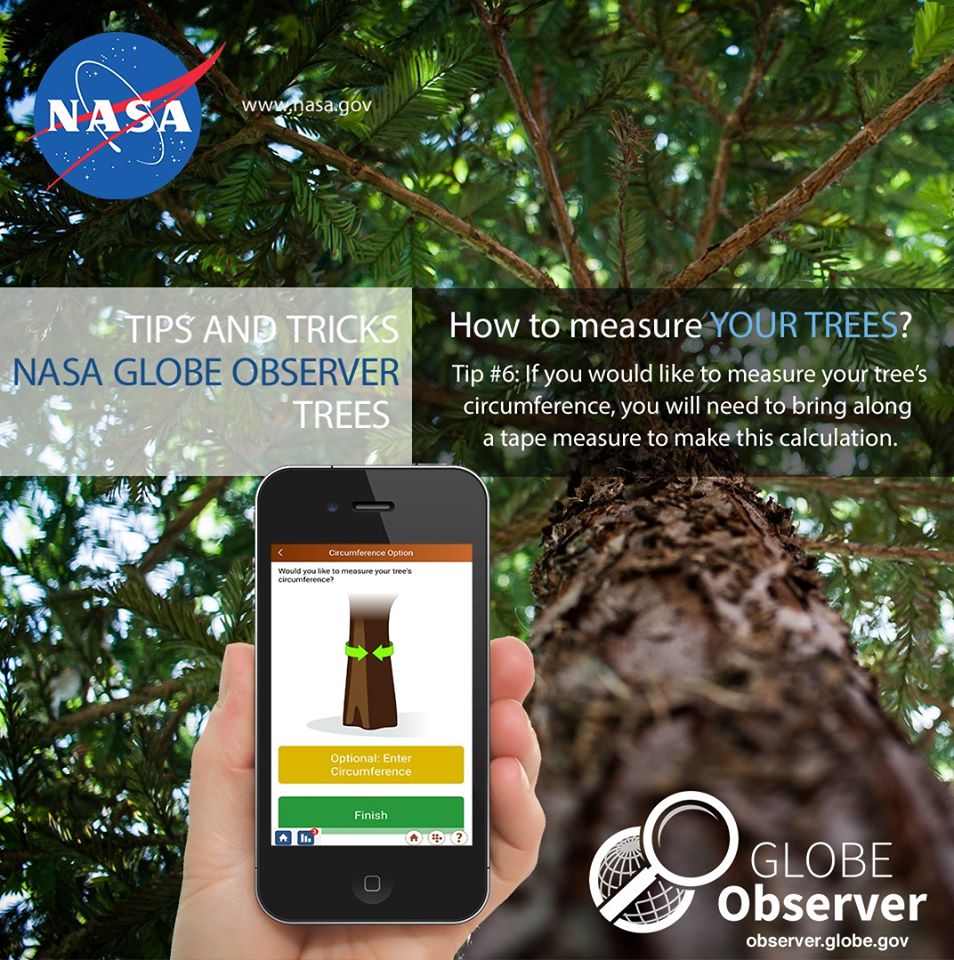
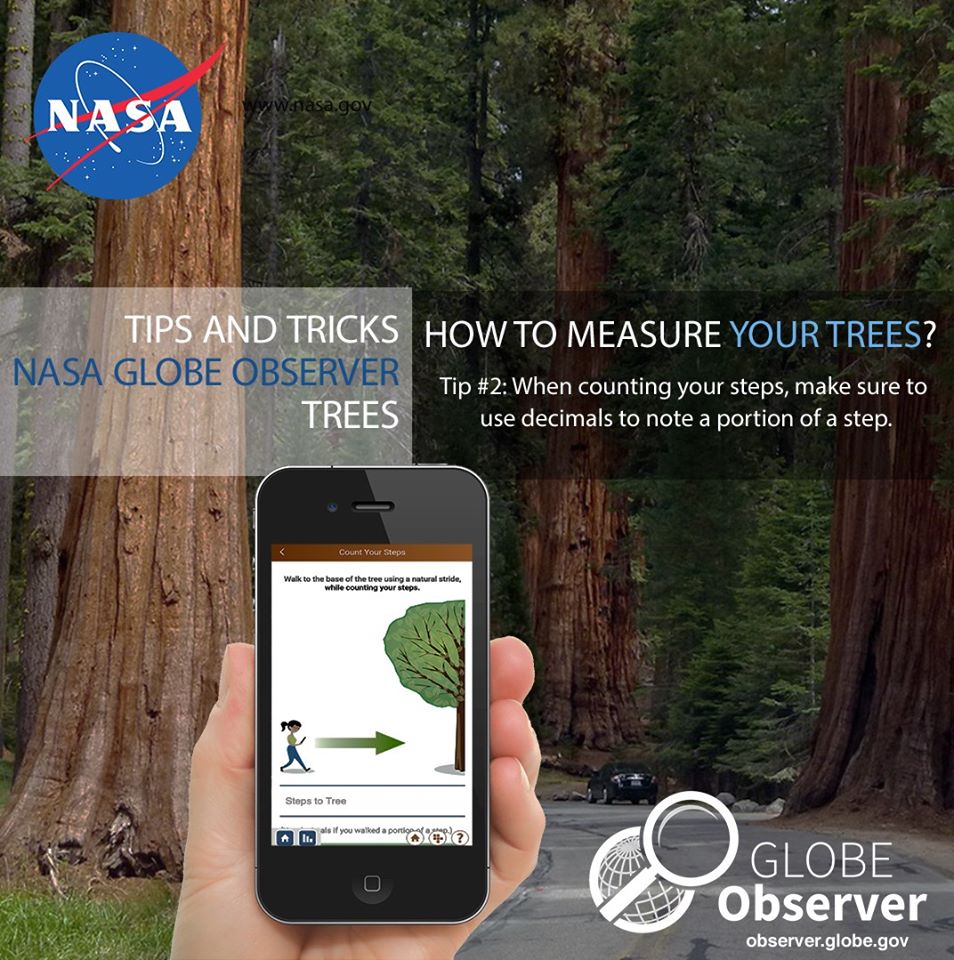
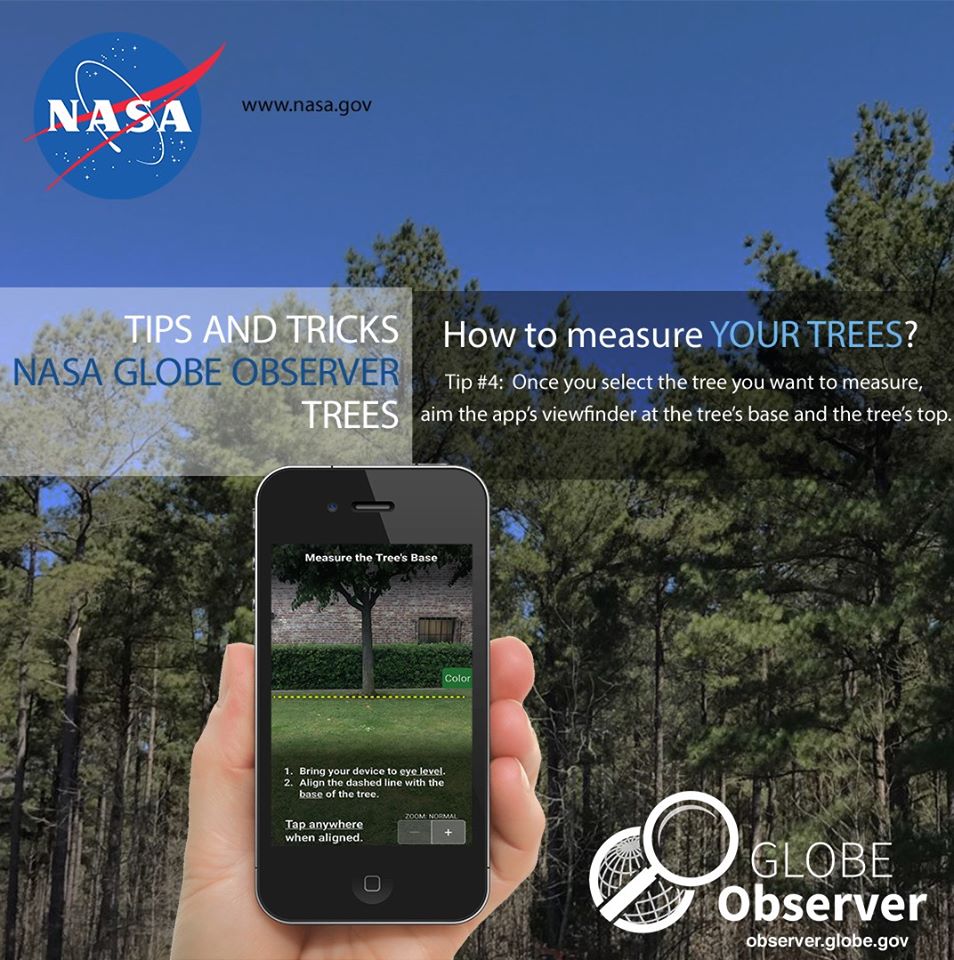
Frequently Asked Questions - Trees Observations
This section is for questions about how to use the app to take observations. If you have an overall app question, not specifically about the Trees tool, try the general FAQ page. Science-focused questions (such as why scientists study tree height and the NASA connections to the data) are covered on the Trees Science page.
When selecting a tree, try to find one that is straight. You also need to clearly and safely see the top and base and be able to walk in a straight line to the base of the tree.
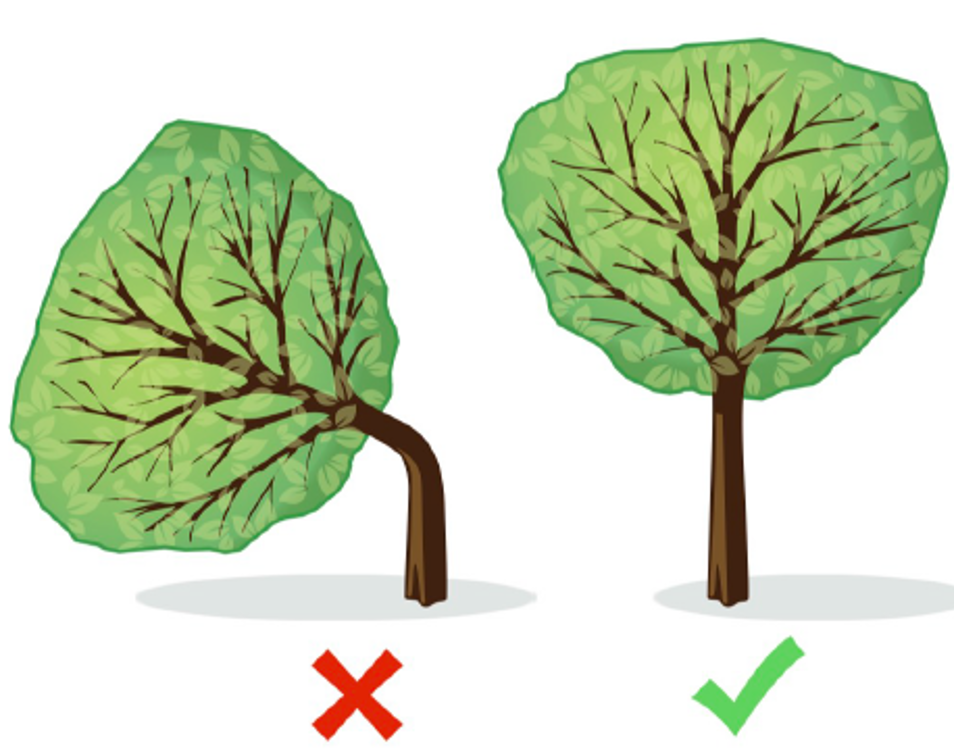
When possible, take measurements of isolated trees. If trees are in a grouping, take a measurement of the tallest tree in that group.
The trees should be over 5 meters (15 feet) in height. Shorter trees may be considered saplings or shrubs.
The top of a tree, also known as the canopy or crown of a tree, is the uppermost part of the tree. The base of the tree is the lowest part of the tree trunk that is still above ground.
Record the height of trees in as many places as you would like. Also, you can measure the same tree many times, in order to see potential changes to tree heights over time.
Trees should be measured at about chest height, or 135 cm/4 feet, 5 inches above the ground. If you encounter a tree that is forked or has branches near that height, or is on a steep slope, addition guidance can be found in the "Tree Circumference Guide: Badly Behaving Trees."
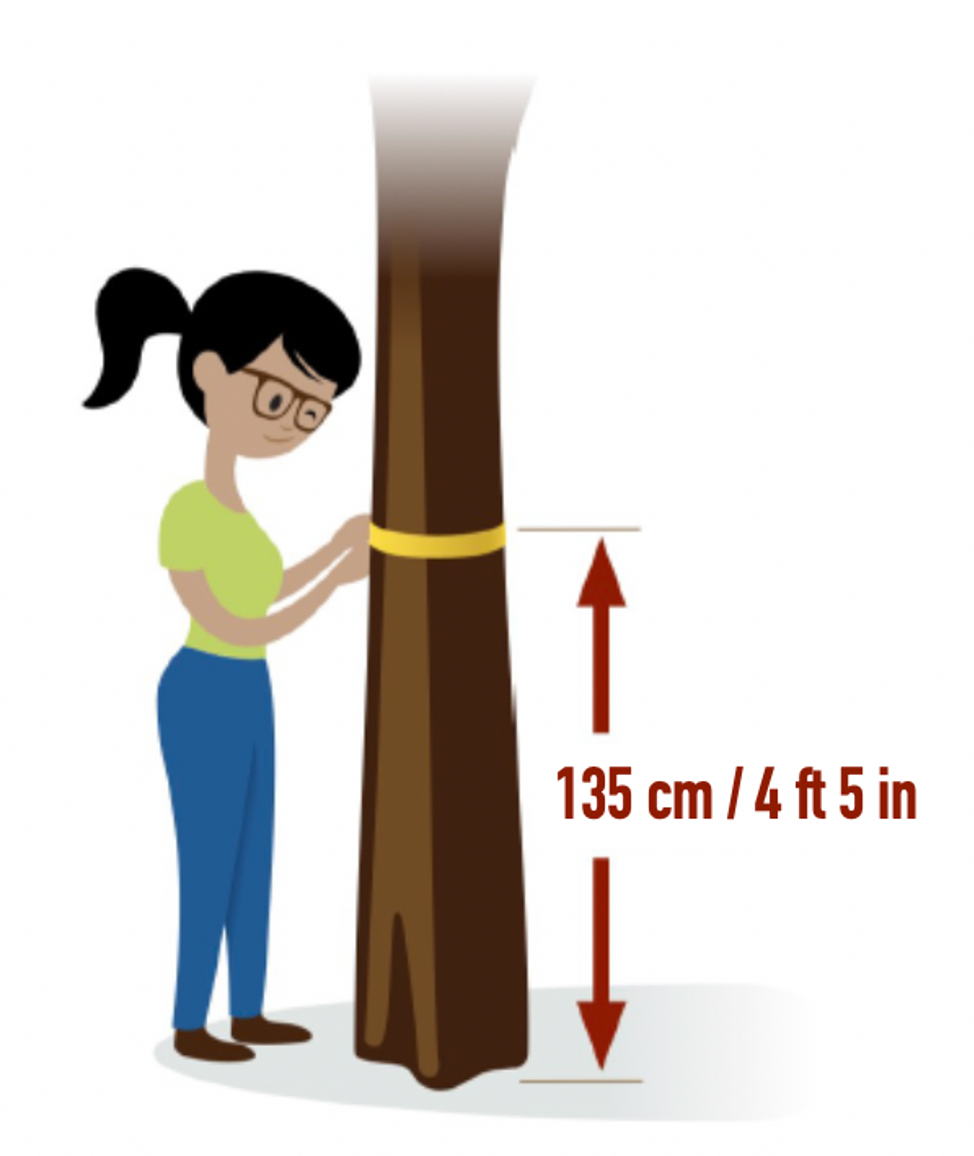
If you don't have another person to help you, try making a small mark with your fingernail as far as you can reach, and measure the circumference in two stages.
Surface conditions are an important part of trees observations. Knowing the local environmental conditions will allow for a much more robust dataset that can be used in defining the local ecosystem. By reporting surface conditions, you are also providing additional data to assist during analysis and comparison to satellite data.
While in the Trees tool, tap on the question mark at the lower right, and select "Change Current User Height Settings."
While in the Trees tool, tap on the question mark at the lower right, and select "Introduction." Walk through the screens and change any settings you wish to modify.
If following the directions and moving further away doesn't clear the error message, your device may not have the gyroscope needed to measure the angles and calculate tree height using the app. You can check your device specifications to be sure. The other tools in the app will not be affected.
We recommend a distance of 7 to 15 meters (25 to 75 feet), in a position where you can clearly see the base and top of the tree and can walk in a straight line to the base.









